Acute Triangle – Definition with Examples
reviewed by Jo-ann Caballes
Updated on October 8, 2024
At Brighterly, we make learning math exciting and engaging for all kids.
Today, as part of our series on shapes, we’re looking at acute triangles.
In this article, we’ll cover the acute triangle definition, the different types of acute triangles and their properties, and share examples of acute triangles and practice math problems.
What is an acute triangle?
An acute triangle is a special type of triangle defined by the size of its internal angles. See the full definition of acute triangles below.
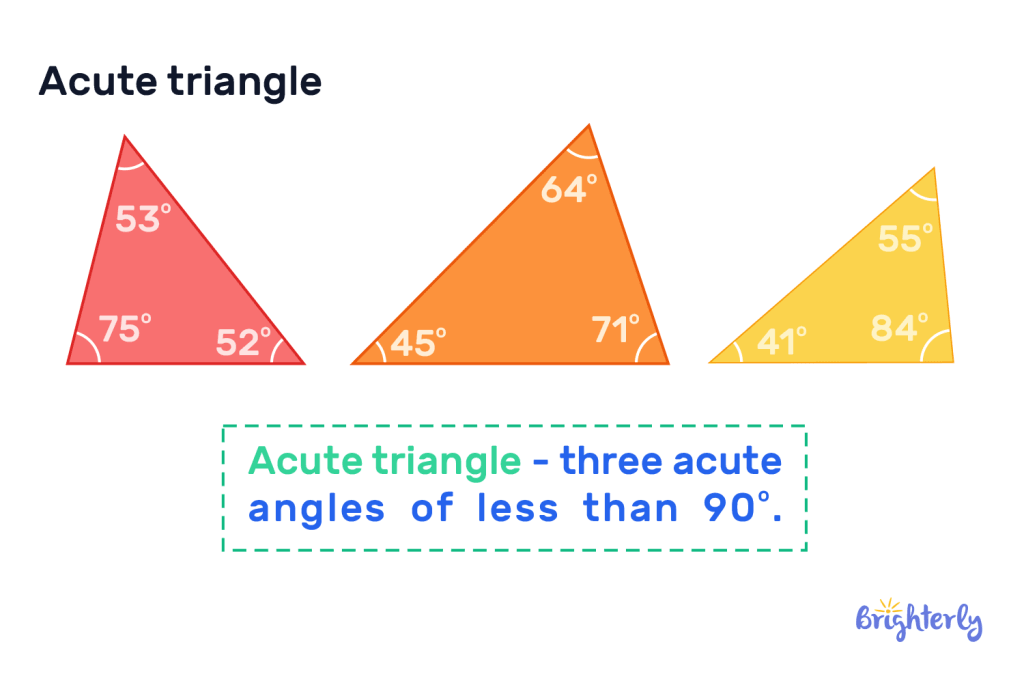
Acute triangle: definition
The acute triangle definition geometry is a triangle with 3 acute angles (less than 90°), which is where the acute triangle name comes from. You’ll see acute triangles of all different shapes in sizes, but they all have angles of under 90°.
Acute triangles: types
There are different types of acute triangles categorized based on the length of their sides. There are three main types of acute triangles:
Equilateral acute triangle
An equilateral acute triangle has three sides equal in length, and three angles that are all the same size. Each angle will always measure 60°.
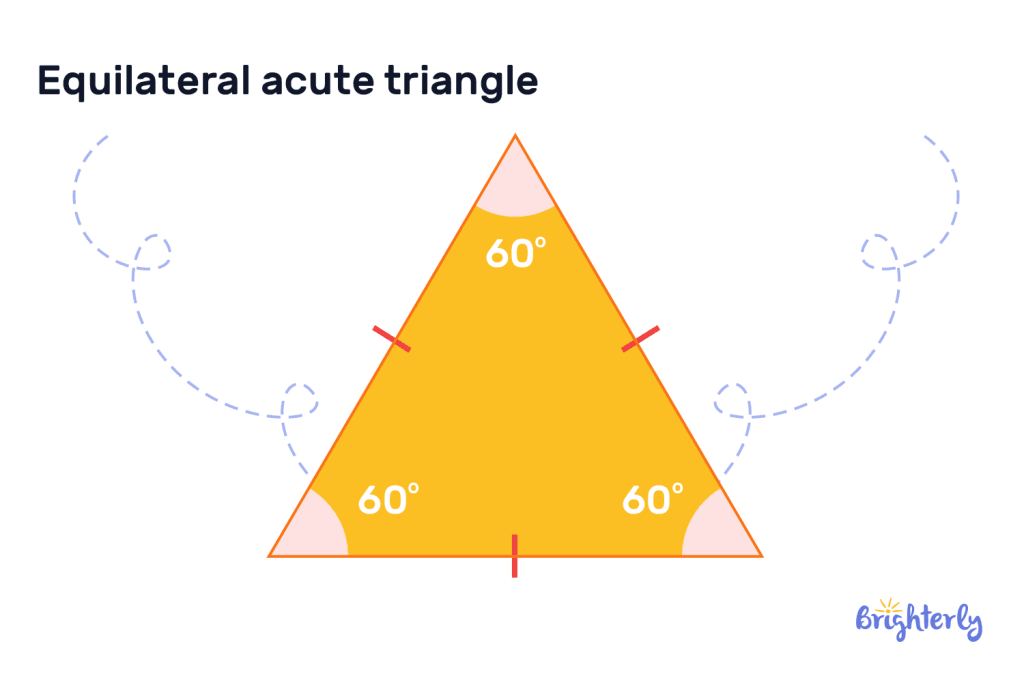
Isosceles acute triangle
In an isosceles acute triangle, two sides of the triangle will be equal length. This means the two angles opposite these equal sides are also equal.
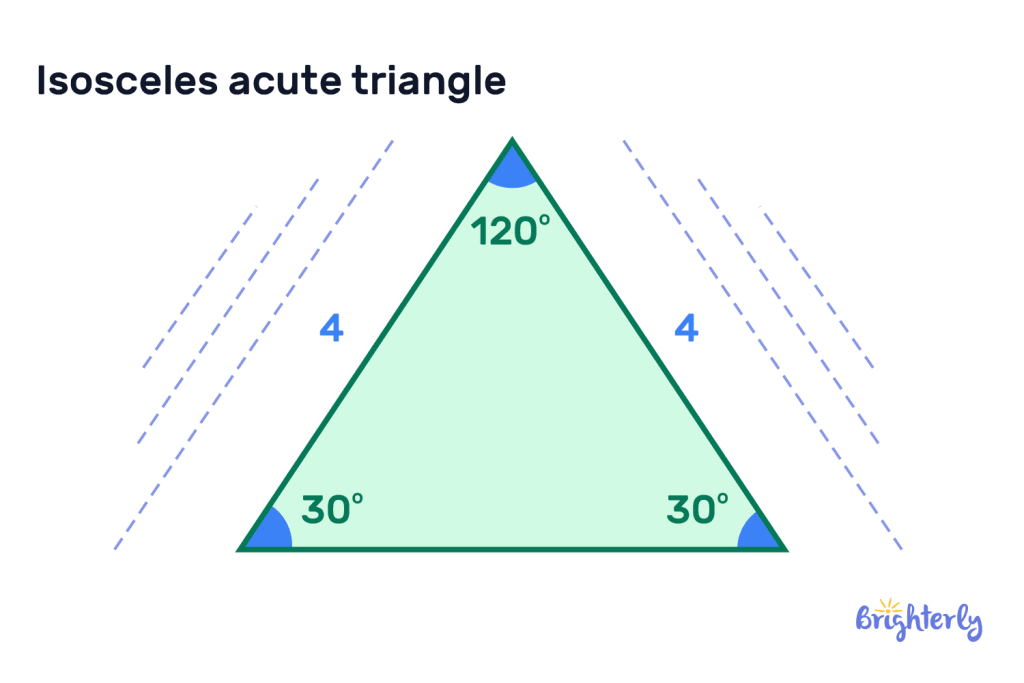
Scalene acute triangle
In a scalene acute triangle, all three sides of the triangle are different lengths. This means that each internal angle will be different too – but they’ll still always be under 90°. Here is an acute scalene triangle example:
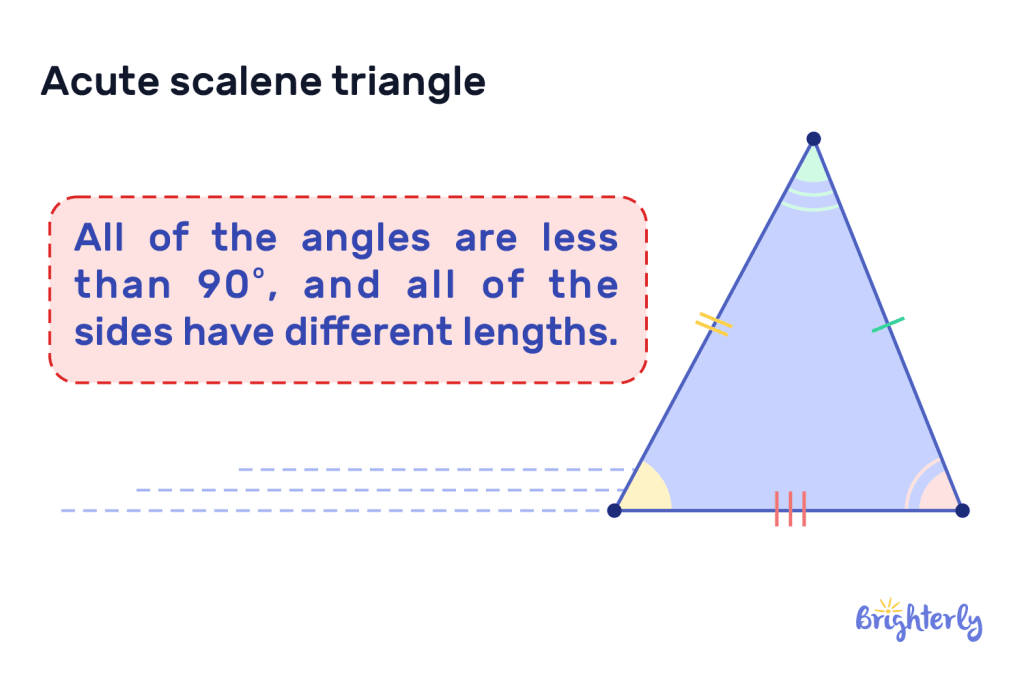
These are the main types of acute triangles, but there are some more specific classifications that are categorized by their side lengths and angle measures.
Obtuse-angled isosceles triangle
An obtuse-angled isosceles triangle will have one obtuse angle, which is an angle greater than 90° and two equal sides. Here is an acute and obtuse triangles example.

Right-angled isosceles triangle
The right-angled isosceles triangle has one right angle, which is 90°, and two equal sides.
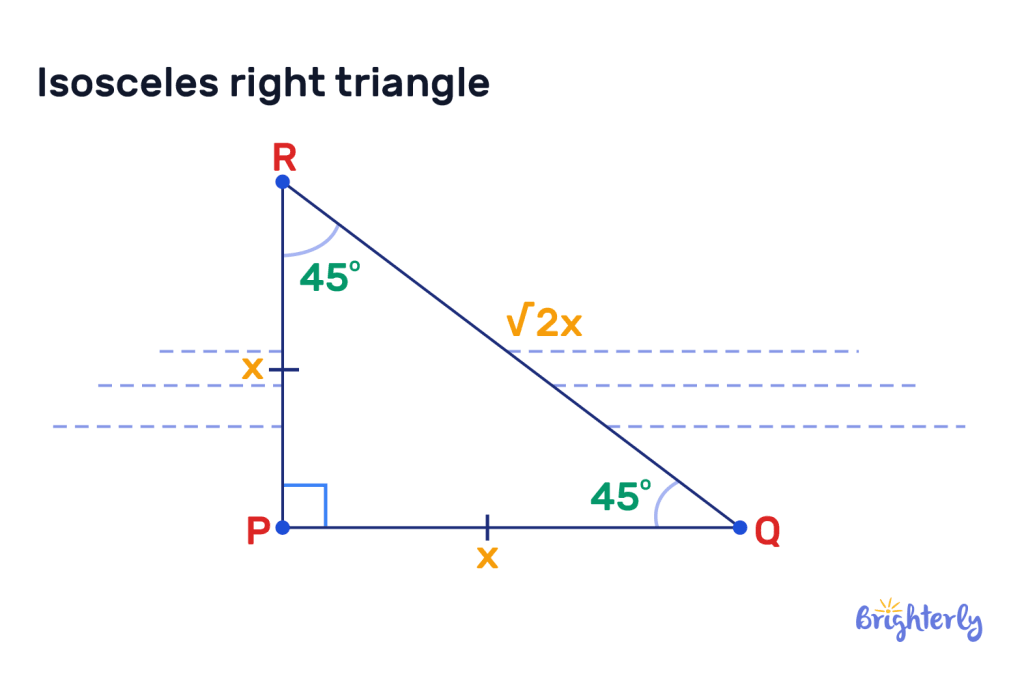
Find out more about the different types of triangles with our informative article.
Acute triangle: formula
There are different formulas available that you can use to find the properties of acute triangles, including angle measures, area and side lengths. Here are the most common acute triangle formulas:
- Law of cosines: a² = b² + c² – 2bc * cos(A)
- Law of sines: a/sin(A) = b/sin(B) = c/sin(C)
- Heron’s formula for area: Area = √(s * (s – a) * (s – b) * (s – c)), where s = (a + b + c) / 2 (semiperimeter)
Properties of acute triangle
The properties of acute triangles are factors that make them different to other types of triangles.
- All acute triangles have angles of less than 90°.
- The sum of all acute triangle angles is always 180°.
- Acute triangles can also be equilateral, isosceles and scalene triangles.
- In an acute triangle, the shortest side is always opposite the smallest angle, and the longest side will always be opposite the largest angle.
Can an acute triangle be scalene?
Yes, an acute triangle can also be a scalene triangle. In scalene acute triangles, each of its three sides is a different length, meaning each angle is a different size too. An acute triangle real life example could be a slice of pizza.
Depending on their angle measurements, scalene triangles can be acute, right-angled or obtuse.
Solved math tasks: examples
Now you know about acute triangles, why not put your knowledge to the test with our solved math tasks?
Which set of angles can form a triangle acutely?
Detail the angles that can form an acute triangle.
Answer:
|
There are many angles that can form an acute triangle, as long as they are all under 90°. |
Here are some examples of acute angles:
- 85°, 55°, 40°
- 60°, 70°, 50°
- 45, 35, 80°
What type of triangle has three acute angles?
Write down your answer.
Answer:
| A triangle with three acute angles is an acute triangle. |
This is because acute triangles get their names from their acute angles, which are all below 90°.
How many acute angles are in an acute triangle?
Write down your answer.
Answer:
| There are 3 acute angles in an acute triangle. |
However, you can also have an acute right-angled triangle and an obtuse-angled acute triangle, which have two acute angles each.
Acute triangle: practice math problems
Acute triangle: worksheets
Put your new-found knowledge on acute triangles to the test with our free math worksheets!
- Classifying triangles worksheets
- Measuring angles worksheets
- Types of triangles worksheets
- Types of angles worksheets






